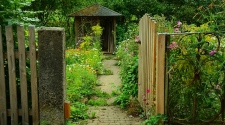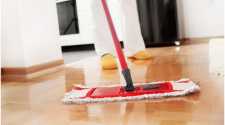Want a beautiful landscape but worried that it will bring a drastic increase in your water usage? Not all beautiful landscapes require constant watering. In fact, with a little planning, you can craft a picturesque, water-saving space. Here are some tips for getting started:
Want a picturesque landscape that also helps you save water? Do a little planning and enjoy wonderful end results.
Put Plants in the Right Places
Some plants will naturally grow better and require less water than others. These are called native plants, which are ones that thrive in your climate. Local greenhouse representatives or your local extension office should have a list of native plants for your area or should be able to help you choose native plants that would work well in your landscape.
In addition to crafting your landscape with native plants, be sure you put the right plants in the right places around your yard. For example, some plants love shade while others grow best in full sun. Know the preferences of the plants you intend to use. By planting them in the right places, you’ll use less water because the plants will grow better with less care in the spots they love.
Sculpt Your Landscape
According to Reduce Your Use: Design Your Yard to Save Water, some spots in your landscape will naturally be wetter than others. Capitalize on this by placing plants in the yard’s low spots where rain water naturally collects. This plan will deliver more water to plants without you having to turn on the sprinkler. Of course, pay attention to which plants in your landscape prefer a wetter growing area and which prefer dryer conditions and arrange them according to their preferences.
Mulch Around Plants
Water less by mulching more. A high quality cedar mulch prevents soil from drying too fast so that you can water less often. Research how much mulch should be placed around your various types of plants. To maximize the benefits offered by mulch, apply a new layer each spring. If you don’t want to purchase cedar mulch due to the price, consider making your own version of mulch with a blend of crushed up leaves, branches and other natural elements.
Collect Rain Water
If allowed in your area, collect rain water by investing in rain barrels. Collecting rain water is actually quite easy. It just requires the right tools and a little cooperation from the atmosphere. Some neighborhoods and cities don’t allow the collection of rain water, so check on the laws in your area before pursuing this water-saving tactic. The costs of fees associated with breaking an anti-water collection law would be much more than a high monthly water bill.
Water with Care
Most styles of sprinklers waste a lot of water by spraying an entire area rather than delivering water directly to a plant’s roots. Save more water by watering plants with a hand sprayer or by investing in a drip system. If using a hand sprayer, use a gentle setting and hold the nozzle close to each plant’s base. If using a drip system, invest in a high quality drip hose and position the hose as close as possible to the base of each plant.
Creating a water-saving landscape is possible, it just requires a bit of planning. From investing in native plants to mulching around your plants, there are many ways to reduce water usage while maintaining a beautiful landscape.













